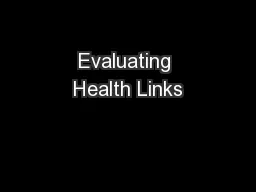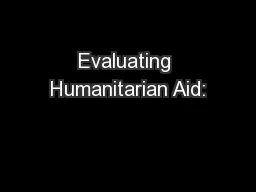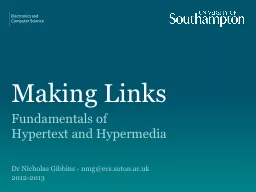PPT-Evaluating Health Links
Author : min-jolicoeur | Published Date : 2018-03-12
in Ontario Walter Wodchis PhD Health Quality Rounds Southlake Hospital May 19 2016 Design by Walter Wodchis Luke Mondor Kevin Walker Agnes Grudniewicz Jenna
Presentation Embed Code
Download Presentation
Download Presentation The PPT/PDF document "Evaluating Health Links" is the property of its rightful owner. Permission is granted to download and print the materials on this website for personal, non-commercial use only, and to display it on your personal computer provided you do not modify the materials and that you retain all copyright notices contained in the materials. By downloading content from our website, you accept the terms of this agreement.
Evaluating Health Links: Transcript
Download Rules Of Document
"Evaluating Health Links"The content belongs to its owner. You may download and print it for personal use, without modification, and keep all copyright notices. By downloading, you agree to these terms.
Related Documents














